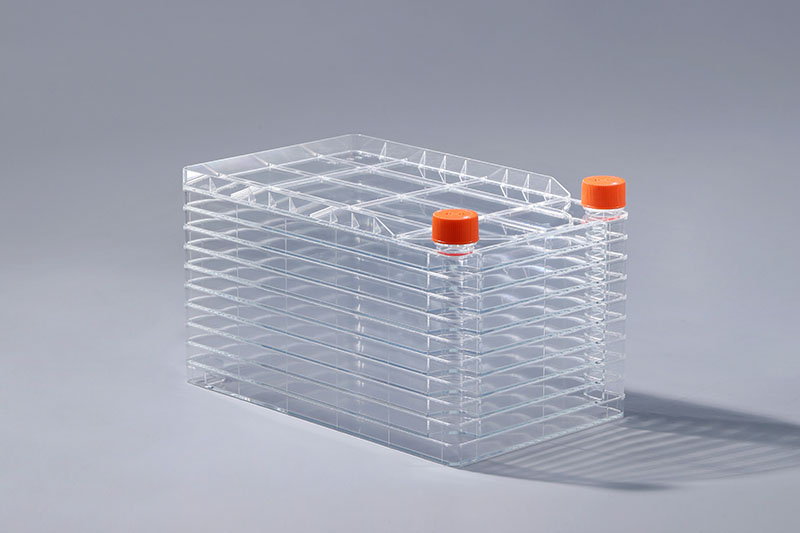Cellodlingsteknologi är en vanlig teknik inom områdena bioläkemedel, monoklonala antikroppar och cellterapi. Hög temperatur är inte bra för cellodling. Celler odlas vid 39-40°C i 1 timme, de kan skadas i viss utsträckning, men de kan fortfarande återhämta sig, men de kan inte tolerera en temperaturökning på 2°C under flera timmar, det vill säga om de odlas vid 41-42°C under 1 timme är cellskadan allvarlig. De flesta av cellerna dödades när temperaturen var över 43°C. Hög temperatur orsakar huvudsakligen inaktivering av enzymer, förstörelse av lipider, förstörelse av kärndelning, produktion av koagulas, koagulering av celler och denaturering av proteiner. Därför måste cellfabriken hålla en lämplig temperatur och undvika hög temperatur vid odling av celler. används främst för storskalig cellodling. Tillväxten av celler påverkas av många faktorer, av vilka temperaturen är en mycket viktig aspekt. För hög eller för låg temperatur kommer att påverka tillväxten av celler. Cellernas förmåga att tolerera låg temperatur är starkare än värmebeständighetens. Vid låg temperatur reduceras cellernas metaboliska aktivitet och kärndelning. När temperaturen inte är lägre än 0 °C, även om det påverkar cellmetabolismen, har det ingen skadlig effekt; när cellerna placeras vid 25 till 35 °C kan cellerna fortfarande överleva och växa, men hastigheten saktas ner; Tillbaka till 37 ℃ odlingsceller kan fortsätta att växa.
Sammanfattningsvis påverkas celltillväxten i en cellfabrik av flera faktorer, och temperaturen är bara en av dem. Andra inkluderar osmotiskt tryck, steril miljö, gas och pH.
High temperature is not good for cell culture. Cells are cultured at 39-40°C for 1 hour, they can be damaged to a certain extent, but they can still recover, but they cannot tolerate a temperature increase of 2°C for several hours, that is, if they are cultured at 41-42°C for 1 hour, the cell damage is severe. Most of the cells were killed when the temperature was above 43°C. High temperature mainly causes the inactivation of enzymes, the destruction of lipids, the destruction of nuclear division, the production of coagulase, the coagulation of cells, and the denaturation of proteins. Therefore, the cell factory must maintain a suitable temperature and avoid high temperature when culturing cells.
In conclusion, cell growth in a cell factory is affected by multiple factors, and temperature is only one of them. Others include osmotic pressure, sterile environment, gas, and pH.
The FAI climbed 5.9 percent year-on-year in the first 11 months of 2018, quickening from the 5.7-percent growth in Jan-Oct, the National Bureau of Statistics (NBS) said Friday in an online statement.
The key indicator of investment, dubbed a major growth driver, hit the bottom in August and has since started to rebound steadily.
In the face of emerging economic challenges home and abroad, China has stepped up efforts to stabilize investment, in particular rolling out measures to motivate private investors and channel funds into infrastructure.
Friday's data showed private investment, accounting for more than 60 percent of the total FAI, expanded by a brisk 8.7 percent.
NBS spokesperson Mao Shengyong said funds into weak economic links registered rapid increases as investment in environmental protection and agriculture jumped 42 percent and 12.5 percent respectively, much faster than the average.
In breakdown, investment in high-tech and equipment manufacturing remained vigorous with 16.1-percent and 11.6-percent increases respectively in the first 11 months. Infrastructure investment gained 3.7 percent, staying flat. Investment in property development rose 9.7 percent, also unchanged.
 English
English



















































